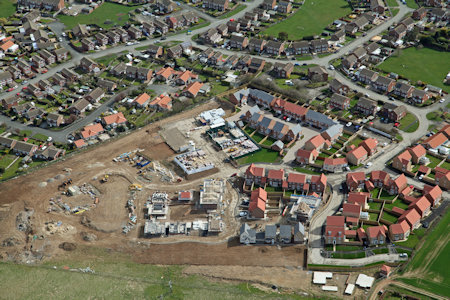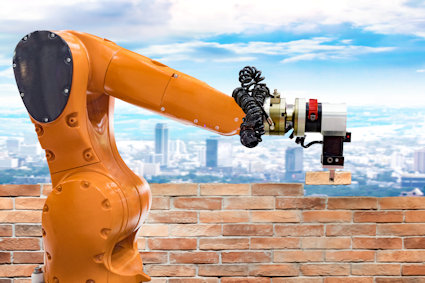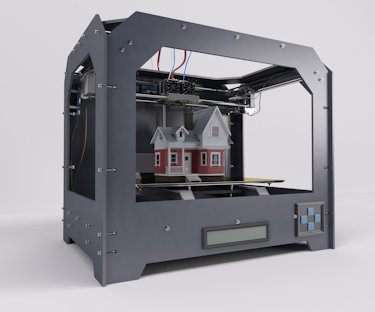How is the Construction Industry Closing the Skills Gap and Meeting Housing Demand?
20th Dec 2022With a global housing crisis on our hands – particularly an undersupply in England, where we’re also suffering from a skills shortage in the construction industry – there’s high demand for new-build properties that are built swiftly, to high quality and at a lower cost.
Difficulties in sourcing the right staff with the right skills and following the complications that came from working on site during times of social distancing have brought the global construction industry under the spotlight in recent years. And the skills gap didn’t just impact us here in the UK. Countries from Australia and Spain to Greece, Portugal and even the USA have all felt the consequences of a deficiency in trained labour.

With overpopulation and its resource-exceeding effects, housing levels are becoming vitally low, and it’s not just the UK feeling the ramifications. Australia is also preparing to batten down the hatches as it heads into a “decade-long housing supply crunch1“. With homeownership incentivised as an investment, housing supply, especially in cities, has been severely restricted over recent years. Here in the UK, residents in highly populated areas, such as London and Brighton, have witnessed this first-hand. This insufficient housing stock is driving up house prices, resulting in affordability issues for Britain’s first-time buyers trying to get a foot on the property ladder2.
How is the Construction Industry Closing the Skills Gap and Meeting Housing Demand?
The two challenges highlighted, the housing crisis and skills shortage, have together encouraged the housebuilding sector – and general construction industry, which is notoriously archaic when it comes to the adoption of modern-day, time- and cost-saving technological solutions – to explore new territories in the worlds of technology and automation.
Let’s explore the tech-savvy systems the sector is slowly integrating into its arsenal.
Smart Structures
Laying Bricks and Blocks on Site
Throughout the world, contractors have turned to robots to help speed up the process of building the homes that are so desperately needed. In Australia, a country we’ve already mentioned for its shortage of housing supply, one example of using automation comes in the form of a brick-laying machine, which can lay bricks significantly 10 times faster than manual labour. Perth-based Fastbrick Robotics’ Hadrian X Robot (not pictured) can lay a house’s walls on site in just one day.
Learn more about Fastbrick Robotics’ Hadrian X here.

Meanwhile, here in the UK, York-based company Construction Automation has recently received approval from The National House Building Council (NHBC) – known for its work in improving the construction standards of new-build homes – for its brick-laying robot. Capable of laying bricks, blocks and mortar, the Automated Brick Laying Robot (ABLR) [not pictured] features a gripper arm and dispenser and follows architects’ plans.
Find out more about Construction Automation and its robotic brick-laying system here.
Taking the Construction Process Off Site
In a move that’s been labelled as modern methods of construction (MMC), many housebuilders have taken construction work off sites to erect homes in factory-controlled conditions, which not only improves quality but also enables everyday processes to go ahead whatever the weather.

Offsite Robots
Of course, factories and automation go hand in hand, so it’s no surprise that robots are forming part of the production line for offsite construction. Following in the footsteps of automotive factories, many firms have deployed their systems to assist in the housebuilding process.
Kawasaki Robots, for example, stand proud on modular housebuilder Sekisui Heim production line, boasting 30 different welding programmes to meet the floor-specific requirements of each housing unit. Following welding labour shortages, Sekisui Heim has found robotic solutions are a more effective means of production, rather than relying on the scant staff available for this line of work.
You can learn more about Kawasaki Robots’ factory implementation here.
Offsite construction Lasers
Alongside hi-tech robotics, ultra-precision lasers also feature in offsite construction factories, where they’re used for pre-fabrication purposes for partially or fully assembled structures. For housebuilders like UK-based LocaL Homes – which offers high-quality, high-performance, low-carbon housing solutions – lasers have been brought into factory environments to ease the manufacturing process. Specifically for this housebuilder, lasers are used to ensure accuracy when making any cuts.

Onsite construction Lasers
You’ll also find laser-based systems on development sites to survey and assess locations and create 3D renders. Delivering high levels of accuracy and detail, 3D scanners enable surveyors to analyse hard-to-reach or dangerous areas, provide 3D walk-throughs and models and, ultimately, save contractors spending more time than necessary on sites.
Creating the Perfect Finish
It’s not just the construction of a home that can be undertaken autonomously. Once the walls, ceilings and floors have been built, other robots can be brought in to apply the finishing touches to spaces, such as drywall finishing. Construction robotics company Canvas has built a large-scale device that does just that. Ranked number 13 on the Silicon Valley Business Journal/San Francisco Business Times 2022, the robotics brand has built a robot that changed the game for drywall finishing.
Learn more about its drywall finishing robot here.
3D Printed Homes
From ultra-modern homes in Germany to multi-storey properties in Houston and cabins in New York, what was once considered something from the distant future not too long ago is now becoming a reality for many. News of 3D printed homes is popping up from all corners of the globe. Typically using a towering 3D concrete printer, coupled with more traditional methods – such as wood framing – these 3D printers are speeding up construction times, with some taking a mere 220 hours to print a structure3.

How Do Optics Fit into All This New Housebuilding Tech?
Whether it’s a laser, robot, 3D printer or even a drone set off to scope out the topography of a potential new site for development, optics are increasingly beginning to play their part in the housebuilding and construction industry.
With housing targets to meet globally, and growing employment of offsite and onsite robots, construction lasers, and 3D printers, Knight Optical looks forward to providing more technical knowledge for these industry-changing innovations, and is poised to continue supplying both small, one-off, custom-made optical components and larger, stock and customised optics for housebuilding technologies.
To browse our full range of custom-made and stock optical components, visit our website: www.knightoptical.com
Why Choose Knight Optical for your Application?
Discerning customers rely on Knight Optical not only for the premium quality of our output and in-house state-of-the-art Metrology Laboratory and QA Department’s capabilities but because – as well as a range of Stock Optics (available for next-day dispatch) – we also offer our optics as Custom-Made Components.

With over three decades’ experience under our belt and a host of long-standing world-renowned customers on our books, we are proud to have worked on some of the most ground-breaking innovations.
If you are looking for premium-quality, bespoke optical components, please do not hesitate to get in touch with a member of the Technical Sales Team here.
Europe, UK, Asia & RoW:
+44 (0)1622 859444
USA & Canada:
+1 401-583-7846
FOOTNOTES:
3https://www.dezeen.com/2022/10/04/hannah-multi-storey-3d-printed-home-houston/